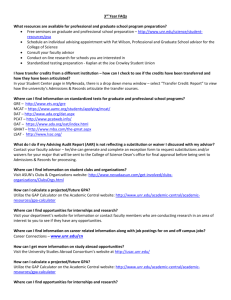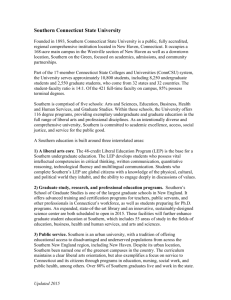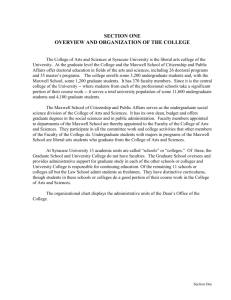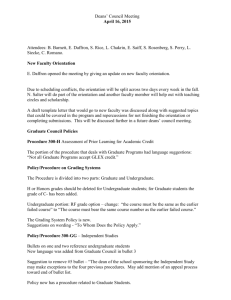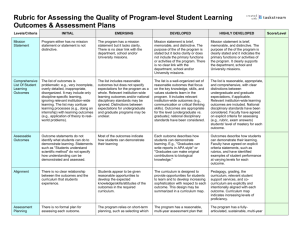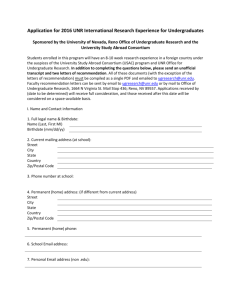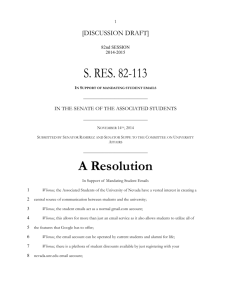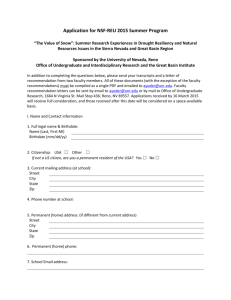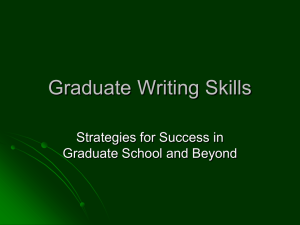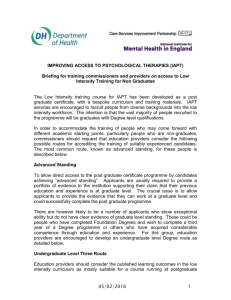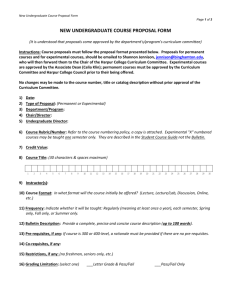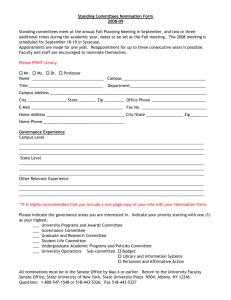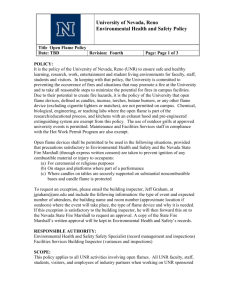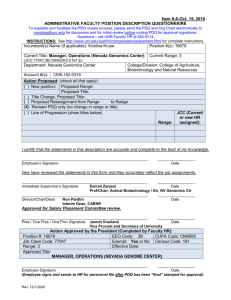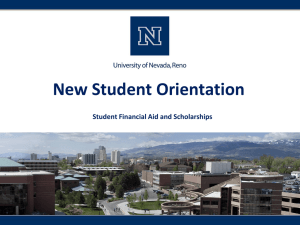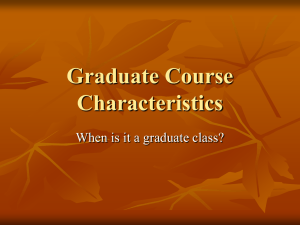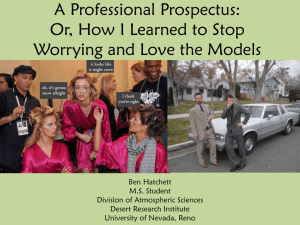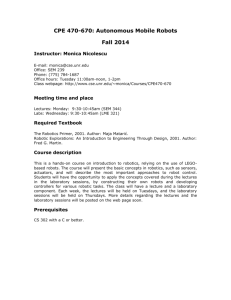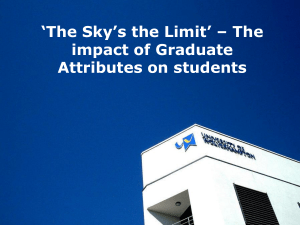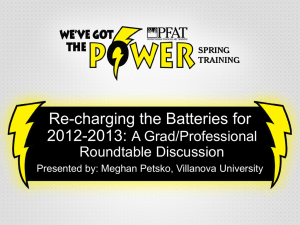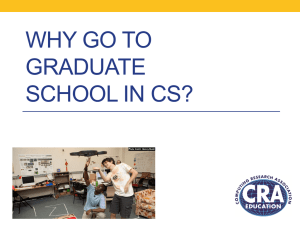February 6, 2013 - PowerPoint Presentation
advertisement
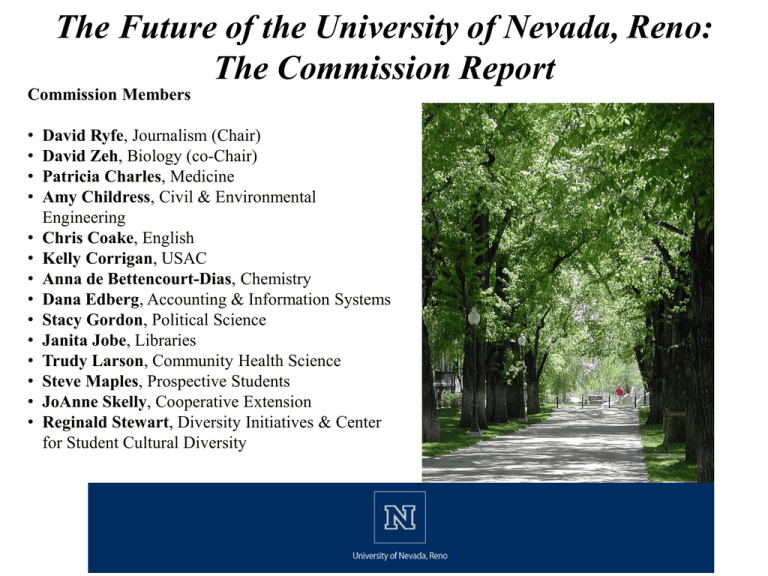
The Future of the University of Nevada, Reno: The Commission Report Commission Members • • • • • • • • • • • • • • David Ryfe, Journalism (Chair) David Zeh, Biology (co-Chair) Patricia Charles, Medicine Amy Childress, Civil & Environmental Engineering Chris Coake, English Kelly Corrigan, USAC Anna de Bettencourt-Dias, Chemistry Dana Edberg, Accounting & Information Systems Stacy Gordon, Political Science Janita Jobe, Libraries Trudy Larson, Community Health Science Steve Maples, Prospective Students JoAnne Skelly, Cooperative Extension Reginald Stewart, Diversity Initiatives & Center for Student Cultural Diversity Challenges Facing Higher Education in Nevada • Skeptical legislators • State disinvestment in public universities • Stagnant economy • Rising costs and burgeoning student debt • Salary erosion • Disruptive innovation • For profit, virtual universities • MOOCs and the extinction of the mid-tier university Crisis? What crisis? 3 Commission Charges Given the fiscal constraints within which UNR will be operating over the next 10-15 years, the institution will not have the capacity to be comprehensively excellent. However, it certainly can be excellent in specific areas. What are these areas? What can and should the university strive to be excellent in? 2. What strategic partnerships (with business, civic organizations, and the like) can and should the university expand and develop to bring new resources to the campus (in the form of internships, curriculum, graduate research/students, and so on)? 1. 4 What other states have done: the virtuous cycle Recruit Students Financial Aid Gain Control Over Tuition Hire New Faculty Recruit Students 5 Nevada and Higher Education State Contribution to UNR Budget $300,000,000 $250,000,000 $200,000,000 $150,000,000 $100,000,000 $50,000,000 $- A Comparison to Peer Institutions Recommendations 1. The university should invest its resources primarily in initiatives that stretch across two or more of its missions and units, and/or that provide faculty and students opportunities to work across two or more units. 2. The next university strategic plan should incorporate the idea of blending, connecting, and integrating across units and missions. 3. The administration, in consultation with faculty, should develop policies and procedures that promote grass-root, faculty proposals for cross-college collaborative research, teaching and outreach. 4. Recruiting efforts for top faculty should emphasize the potential for cross-college collaboration. 5. Metrics should be developed that reward deans, directors and major units that emphasize cross-college collaboration. 6. The university should create centralized grant preparation for multidisciplinary proposal development. 7. The university should enact decision-making processes for the allocation of money that accomplish three goals: Grow revenue while controlling administrative costs Increase the number of full-time tenure-track academic faculty Prioritize building links between missions and units across campus 8 Cross-disciplinary Endeavors at UNR Center of Biomedical Research Excellence (COBRE) $10M in “Integrative Neuroscience” (Liberal Arts, Science and Engineering) Mechanical Engineering $1.2M Graduate Teaching Fellows in K12 (Engineering, Science and Education) Graduate and Undergraduate Programs in Gender, Race and Identity (Liberal Arts) Graduate Program in Hydrologic Sciences (CABNR, DRI, Science, UNCE, USDA, USGS) Undergraduate Major in Neuroscience (Liberal Arts and Science) Undergraduate Major in Molecular Microbiology and Immunology (Medicine and Science) 9
